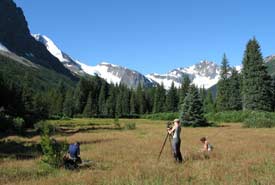The science behind fall colours
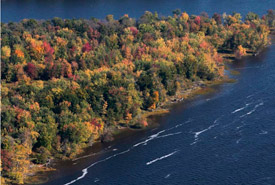
Kettle Island, Quebec (Photo by Mike Dembeck)
In the fall, Canadians pile in their cars and get out into nature to “leaf peep.” Canadian forests are a symphony of colour for a short few weeks in autumn - and as with everything that happens in nature, there’s fascinating science behind this annual display.
It all starts with photosynthesis
To understand why leaves change colour, it’s important to talk about how trees get their nutrients. They do this through a process called photosynthesis, which means, literally, “putting together with light.”
Each green leaf is really a tiny solar-powered factory that is converting light into energy for the plant. Chloroplasts are small bodies that are present in leaves, and they contain chlorophyll, which is responsible for the green colour of a leaf . When water and carbon dioxide come into contact with chlorophyll in the leaf, a chemical reaction takes place, and sugar (along with oxygen) is formed.
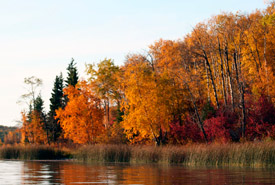
Riding Mountain Aspen Parkland, MB in the fall (Photo by NCC)
When it becomes cooler, it’s no longer efficient for the tree to produce food through photosynthesis, and it begins to prepare for the winter ahead. Chlorophyll starts to break down and other compounds in the leaf start to become visible. These compounds are responsible for leaf colours. Different tree varieties will release different compounds in their leaves, leading to a variety of colours in the forest in fall.
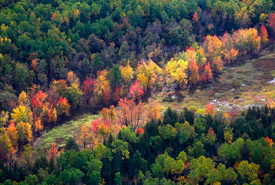
Vicente-Vallée de l'Outaouais, QC (Photo by Mike Dembeck)
Change begins from carotenoids
The same compounds that are responsible for the orange colour of carrots are the triggers for yellow, gold and orange leaf colours - carotenoids and xanthophylls.
Canada’s most widespread deciduous trees, poplars and birches, have carotenoid-rich leaves, and their leaves are predominantly golden in colour as a result.
Anthocyanins responsible for darker hues
While brilliant golds dominate fall in western and northern Canada, the breakout stars of the show are the leaves from trees that contain the most sugar, such as maples and oaks. These sugar-rich varieties are more plentiful in the eastern provinces, such as Ontario and Quebec.
The leaves with the highest sugar content contain anthocyanins, which are byproducts of extra sugar formed late in the summer. They cause the leaves to turn glorious red and purple colours. Maples are especially prone to high sugar content in their leaves, leading to the red colour represented on our national flag. These leaves contain carotenoids as well, and so will have some orange and yellow mixed in.
Planning to view the colours of a fall forest?
Peak viewing times vary according to two factors: temperature and precipitation. In 2016, some parts of Ontario and Quebec may have a shorter-than-usual period where fall colours will be visible due to a lack of precipitation. If a tree goes for long periods without moisture at high temperatures, it puts stress on the tree and the process can begin earlier than usual.
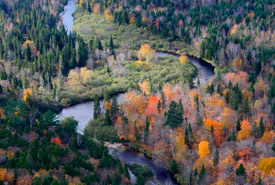
Bartholomew River Project (Photo by Mike Dembeck)
Additionally, leaves can fall off trees more easily after a long hot spell - which means that leaves that may have just begun to turn could be blown off more easily in an autumn wind.
If you take drought out of the equation, generally a cooler summer will lead to an earlier fall leaf viewing season, while a warmer one will potentially delay the whole process well into October. If you are looking for the best times to view fall colours in your province, there are various guides available online, including this one from Algonquin Park in Ontario.
Where to visit
You can find a good place to view fall foliage within an hour’s drive of most major cities in Canada; one of the greatest aspects of being Canadian is our easy access to nature. Even within cities many older parks and urban forests can have brilliant fall colours.
If you would like to explore a Nature Conservancy of Canada property, many of them are open to the public, and we even run guided tours of some of them. Click on your province on this page to find an NCC property close to you. If you want to help out the NCC, consider joining one of our fall Conservation Volunteers events.
This post originally appeared in the Globe and Mail and were produced with the support of Randall Anthony Communications Inc.

